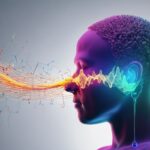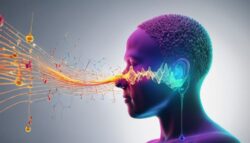Hearing Dysfunction After Treatment With Teprotumumab for Thyroid Eye Disease
The recent observational case series highlighting the possible ototoxic effects of teprotumumab in the treatment of thyroid eye disease (TED) presents a significant concern within the medical community. Given the transformative potential of teprotumumab for patients with TED, the revelation of its association with hearing dysfunction necessitates a careful reassessment of its risk-benefit ratio. This issue not only calls into question the safety protocols in place but also the need for rigorous, transparent research, especially in light of financial disclosures. As we proceed, the balance between therapeutic efficacy and patient safety remains a pivotal concern, inviting a closer examination of the mechanisms underlying these auditory side effects and their long-term implications on patient care.

Study Overview
In this prospective observational case series, researchers aimed to delineate the prevalence, intensity, and the potential for resolution of hearing impairments in patients undergoing treatment with teprotumumab for thyroid eye disease (TED). The study embraced a meticulous design to capture the nuances of auditory dysfunction among this patient cohort. A total of 27 individuals receiving teprotumumab therapy were meticulously followed, documenting their auditory health status before, during, and after the treatment course. The primary objective was to characterize the frequency and severity of hearing impairments and to explore the possibility of their resolution post-therapy. This endeavor was crucial in understanding the otological side effects associated with teprotumumab, a therapeutic agent increasingly utilized in managing TED, thereby informing clinical practice and patient care strategies in a nuanced manner.
Otologic Symptoms

Building on the overview of auditory dysfunction in teprotumumab-treated patients, this section focuses on the specific otologic symptoms reported by the study participants. A striking 81.5% of individuals undergoing teprotumumab therapy for thyroid eye disease (TED) reported experiencing new subjective otologic symptoms. These symptoms varied broadly in nature and included hearing loss, tinnitus, and a sensation of ear fullness. The study meticulously documented the onset, duration, and resolution rates of these symptoms, offering crucial insights into their transient or persistent nature. Importantly, while some patients experienced a resolution of symptoms over time, the variability highlighted the need for further investigation into the mechanisms underlying these auditory disturbances and potential strategies for prevention and management.
Conflict of Interest
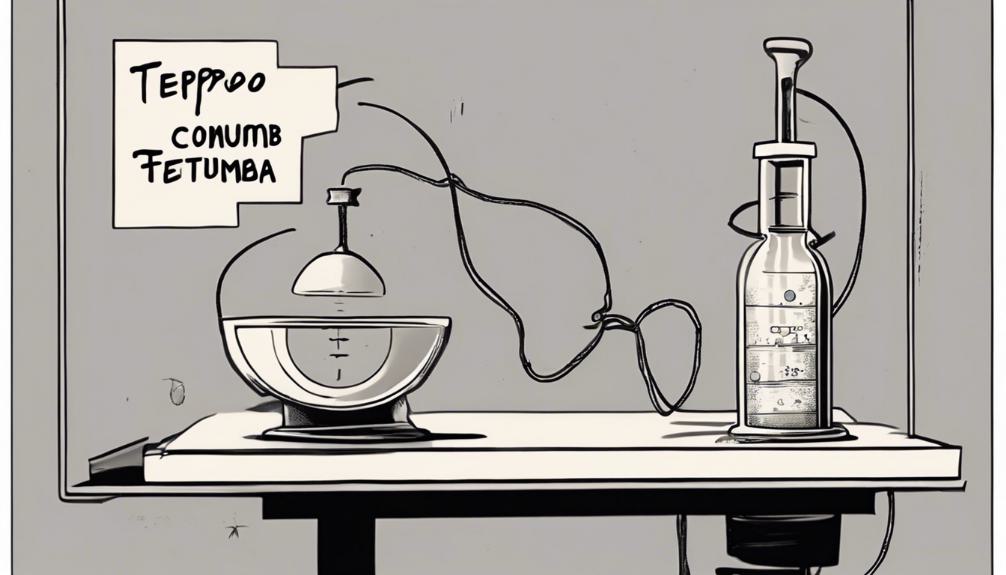
A noteworthy aspect of this study is the disclosure of potential conflicts of interest, with two authors having financial ties to Horizon Therapeutics. This disclosure is crucial for the integrity of the research, as it allows readers to assess the potential influence these ties may have on the study's findings and conclusions. Andrea Kossler and Chrysoula Dosiou, the authors in question, have openly acknowledged their financial relationship with the pharmaceutical company, which manufactures teprotumumab, the drug being studied for its effects on thyroid eye disease (TED) and associated hearing dysfunction. This transparency helps in maintaining the credibility of the scientific process, ensuring that the research findings are evaluated in the context of these disclosed interests.
Key Figures
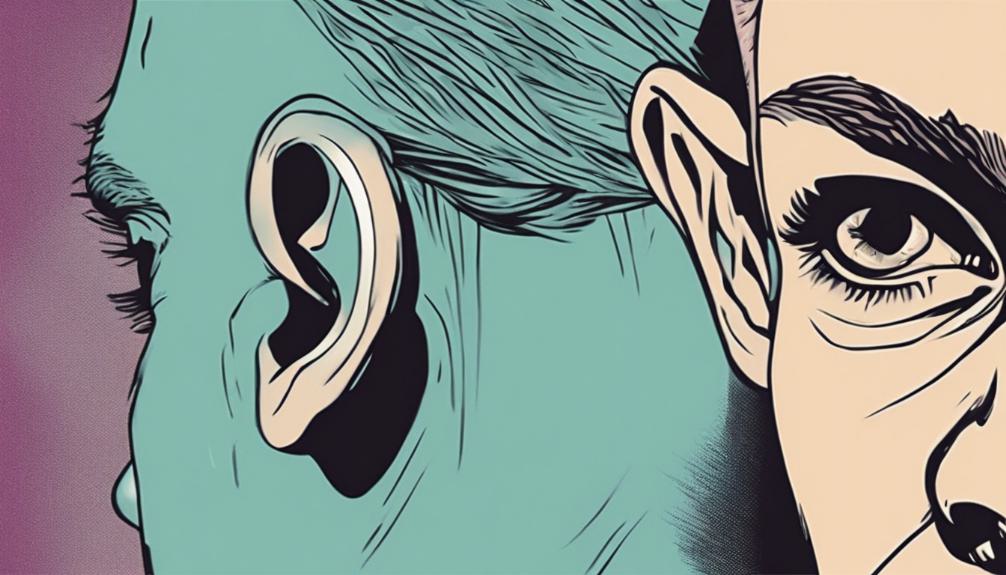
The study meticulously includes several key figures that elucidate the trajectory and resolution of otologic symptoms experienced by patients undergoing teprotumumab treatment for thyroid eye disease. Figure 1 outlines the onset and duration of common symptoms, providing a visual representation of the otologic symptom trajectory. Figure 2 delves into the subjective symptom rate and resolution among the 27 patients studied, highlighting the variability in patient experiences. Figure 3 presents data from pure tone audiometry and word recognition scores, offering objective measures of hearing function before and after treatment. Lastly, Figure 4 showcases the Eustachian tube on rigid nasal endoscopy in a symptomatic patient, illustrating physical changes that may underlie the auditory symptoms. These figures collectively contribute to a deeper understanding of the otologic side effects associated with teprotumumab therapy.
Related Research
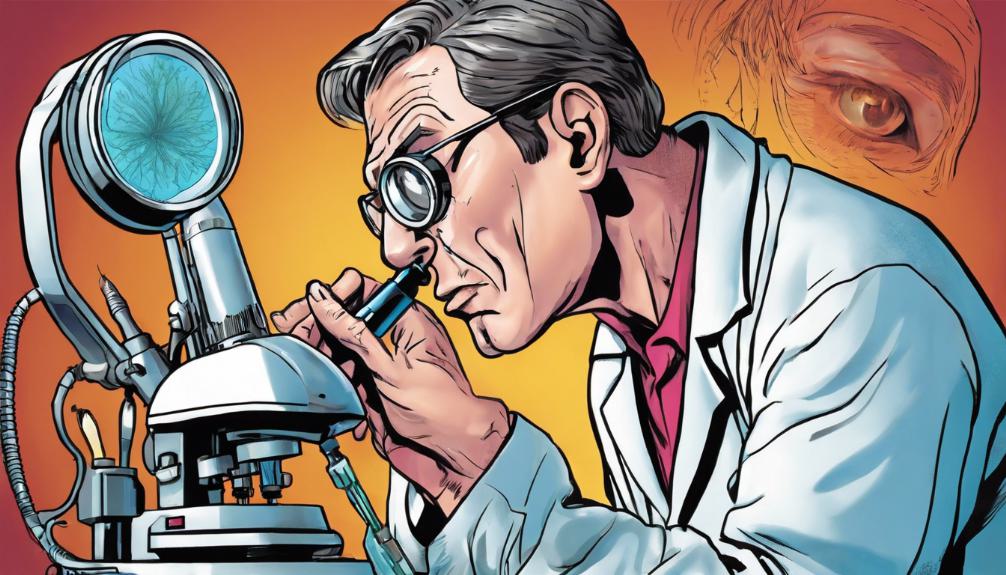
Exploring beyond the specific impacts of teprotumumab on hearing function, related research sheds light on broader implications and potential mechanisms underlying auditory disturbances in thyroid eye disease therapy. Insights from a case report by Ding et al. on sensorineural hearing loss post-teprotumumab therapy underscore the necessity for vigilance in monitoring auditory function. Further, a prospective study emphasizing audiometry outcomes post-treatment highlights the importance of early detection and possible intervention strategies. Bioinformatics and machine learning approaches validating purine metabolism-related genes in thyroid eye disease suggest a complex interplay of genetic and immunological factors. Additionally, systematic reviews and meta-analyses of monoclonal antibodies for Graves ophthalmopathy treatment, alongside in silico studies on drug repurposing, point towards a multi-faceted approach in understanding and addressing the ototoxicity risks associated with therapies targeting insulin-like growth factor 1 receptor signaling.
References

Delving into the references section reveals a meticulously curated list of scholarly works that underscore the scientific discourse surrounding teprotumumab's efficacy and its auditory implications in treating thyroid eye disease. These references are pivotal in establishing the foundation upon which the study's findings rest, offering a comprehensive view of the current understanding of teprotumumab's impact on the auditory system. Among the cited works are studies detailing teprotumumab's therapeutic role in thyroid eye disease, investigations into the drug's potential ototoxic effects, and research on the broader implications of insulin-like growth factor 1 in otology. Each reference serves as a crucial node in the intricate network of knowledge that supports the article's conclusions, demonstrating a thoughtful selection process aimed at enhancing the reader's comprehension of this complex topic.
Frequently Asked Questions
How Can Patients Monitor Their Hearing Health Before, During, and After Teprotumumab Treatment for Thyroid Eye Disease to Detect Early Signs of Hearing Dysfunction?
Patients undergoing teprotumumab treatment should engage in proactive hearing health monitoring to identify early signs of dysfunction. This involves baseline hearing assessments prior to starting treatment, followed by regular audiometric evaluations during and after the therapy course. Prompt reporting of any new otologic symptoms to healthcare providers is crucial. Utilizing these strategies can facilitate early detection and management of potential hearing impairments associated with teprotumumab therapy.
What Are the Specific Steps or Actions That Patients Experiencing Hearing Dysfunction After Teprotumumab Treatment Should Take to Seek Medical Help or Mitigate the Condition?
Patients experiencing hearing dysfunction should promptly consult an audiologist or an otolaryngologist for a comprehensive evaluation, which may include audiometry tests to assess hearing levels and word recognition abilities. Early intervention could include hearing aids, therapy, or other treatments based on the severity and cause of the hearing loss. It's also advisable to discuss the issue with the prescribing physician to consider potential medication adjustments or alternatives.
Are There Any Lifestyle Modifications or Preventive Measures That Can Be Recommended to Patients Undergoing Teprotumumab Treatment to Reduce the Risk of Developing Hearing Dysfunction?
To minimize the risk of developing hearing dysfunction during medical treatment, patients are advised to engage in preventive measures and lifestyle modifications. These may include regular hearing assessments to detect early signs of dysfunction, avoiding exposure to loud noises, and maintaining overall ear health. Additionally, discussing potential ototoxic effects of medications with healthcare providers and exploring alternative treatments or dosages may be beneficial. Open communication with medical professionals is essential for tailored preventive strategies.
How Does the Potential Hearing Dysfunction Associated With Teprotumumab Compare to Other Common Side Effects of Treatments for Thyroid Eye Disease in Terms of Frequency and Severity?
The potential hearing dysfunction associated with certain treatments for thyroid eye disease (TED) appears to be a significant concern, particularly in terms of its frequency and severity compared to other common side effects. While TED treatments aim to alleviate the disease's ocular manifestations, the emergence of otologic symptoms underscores the necessity for a comprehensive evaluation of therapeutic interventions. This highlights the imperative for balanced consideration of efficacy against the risk of adverse effects, including auditory complications.
Can the Hearing Dysfunction Caused by Teprotumumab Treatment Be Differentiated From Hearing Loss or Dysfunction Caused by Other Medical Conditions or Medications, and if So, How?
Differentiating hearing dysfunction caused by specific treatments from that resulting from other medical conditions or medications requires comprehensive diagnostic evaluation. This often involves detailed patient history, audiometric testing, and, in some cases, molecular or genetic screening. Identifying unique patterns in symptom onset, progression, and response to therapy can aid in discernment. Moreover, understanding the pharmacological and biological mechanisms underlying the specific treatment can provide insights into potential causative links to hearing dysfunction.

This post has been generated by AI and was not reviewed by editors. This is Not legal advice. Please consult with an attorney.

